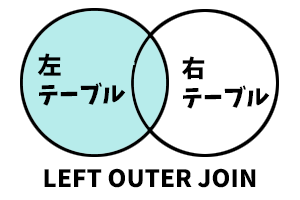What is an outer join in SQL? LEFT OUTER JOIN or LEFT JOIN. RIGHT OUTER JOIN or RIGHT JOIN. In theory, a full outer join is the combination of a left join and a right join. Country AS CustomerCountry, S. FULL OUTER JOIN or FULL JOIN.
An outer join will combine the selected columns from the two joined rowsets for every combination of rows that satisfy the join predicate and will add the rows that are not having a match for the specified join side. A full outer join , or full join , which is not supported by the popular MySQL database management system, combines and returns all data from two or more tables, regardless of whether there is shared information. Think of a full join as simply duplicating all the specified information, but in one table, rather than multiple tables. A outer join B outer join C is the same as A outer join C outer join B. If they have matching values, match them up. The full outer join is asking for everything from table A and everything from table B. Let’s combine the same two tables using a full join.
APPLIES TO: SQL Server Azure SQL Database Azure Synapse Analytics ( SQL DW) Parallel Data Warehouse SQL Server performs sort, intersect, union, and difference operations using in-memory sorting and hash join technology. No discussion of OUTER JOINs would be complete without at least an honorable mention to UNION JOIN. Figure 9–shows the syntax. As you might expect, not many commercial implementations support a UNION JOIN.
The joined table will contain all records from both the tables and fill in NULLs for missing matches on either side. SQL full outer join and SQL join are same. UNION and JOIN within a FROM clause are supported within views and in derived tables and subqueries. A self- join is a table that is joined to itself. The first minutes teach you the basics.
Inner Join , Left Outer Join , Right Outer Join , and Full Outer Join. The second minutes show you are few techniques that. The isnull(t1.policynumber,t2.policynumber) code will provide you with all non-null values in t then use values in t2.

Give this query a shot. I suspect that the WHERE clause is effectively turning your full outer join into a right join. Hints (Transact-SQL ) - Join.
Join hints specify that the query optimizer enforce a join strategy between two tables in SQL Server. For general information about joins and join syntax, see FROM. The SQL Full Join or Full Outer Join is one of the SQL Join Type used to return all the records (or rows) present in both the Left table and the right table. All the Unmatched rows filled with NULL Values. The SQL Server Full Outer join can also call as Full Join.
So it is optional to use the. It returns all the rows from both the tables, if there is no matching row in either of the sides then it displays NULL values in the result for that table columns in such rows. Of course, if you also have Inner Joins, or use a WHERE clause to filter out rows, then this could be different. In the SQL outer JOIN all the content of the both tables are integrated together either they are matched or not.
Outer join of two types: 1. If you take an example of employee table. Left outer join (also known as left join ): this join returns all the rows from left table combine with the matching rows of the right table. Writing Outer Joins in T - SQL. Occasionally someone will ask for my help with a query and say that both a right outer join and a left outer join was trie and.

It is commonly used in conjunction with aggregations to understand. SQL Optimizer is choosing the plan it is. Full Outer Join : Specifies that a row from either the left or right table that does not meet the join condition is included in the result set, and output columns that correspond to the other table are set to NULL.
Nincsenek megjegyzések:
Megjegyzés küldése
Megjegyzés: Megjegyzéseket csak a blog tagjai írhatnak a blogba.